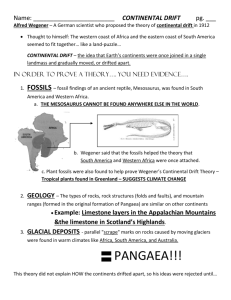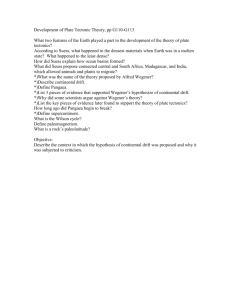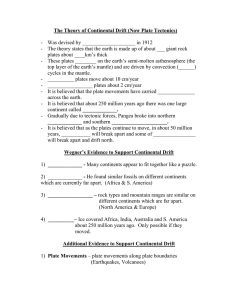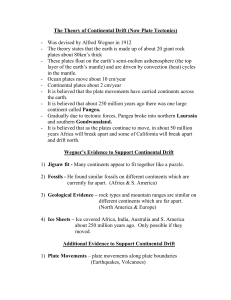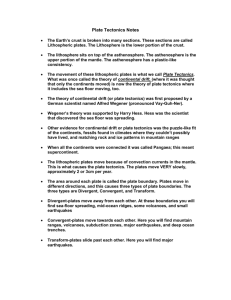Plate Tectonics
advertisement
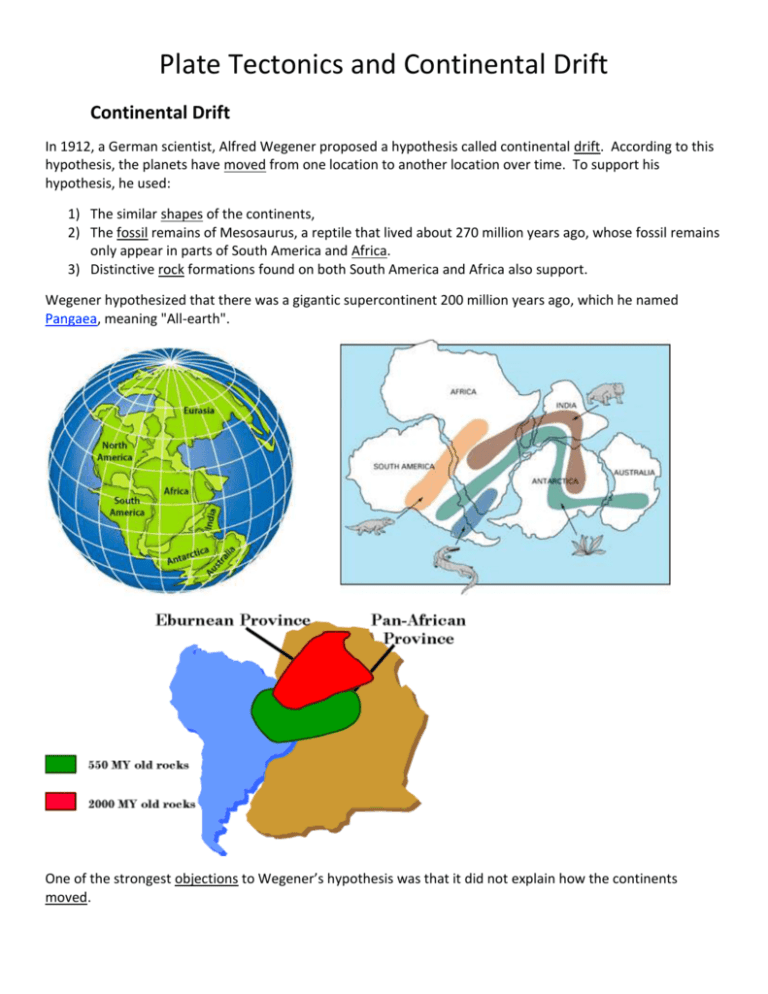
Plate Tectonics and Continental Drift Continental Drift In 1912, a German scientist, Alfred Wegener proposed a hypothesis called continental drift. According to this hypothesis, the planets have moved from one location to another location over time. To support his hypothesis, he used: 1) The similar shapes of the continents, 2) The fossil remains of Mesosaurus, a reptile that lived about 270 million years ago, whose fossil remains only appear in parts of South America and Africa. 3) Distinctive rock formations found on both South America and Africa also support. Wegener hypothesized that there was a gigantic supercontinent 200 million years ago, which he named Pangaea, meaning "All-earth". One of the strongest objections to Wegener’s hypothesis was that it did not explain how the continents moved. Plate Tectonics The Earth's crust is divided into huge, thick plates that drift atop the soft mantle. The plates are made of rock and are from 50 to 250 miles (80 to 400 km) thick. According to the theory of plate tectonics, the continents are embedded in lithospheric plates. As these plates move, they carry the continents with them. The ocean basins are part of lithospheric plates as well. The theory explains why earthquakes and volcanoes are likely to occur in particular locations and how new crust forms along the ocean floor.


